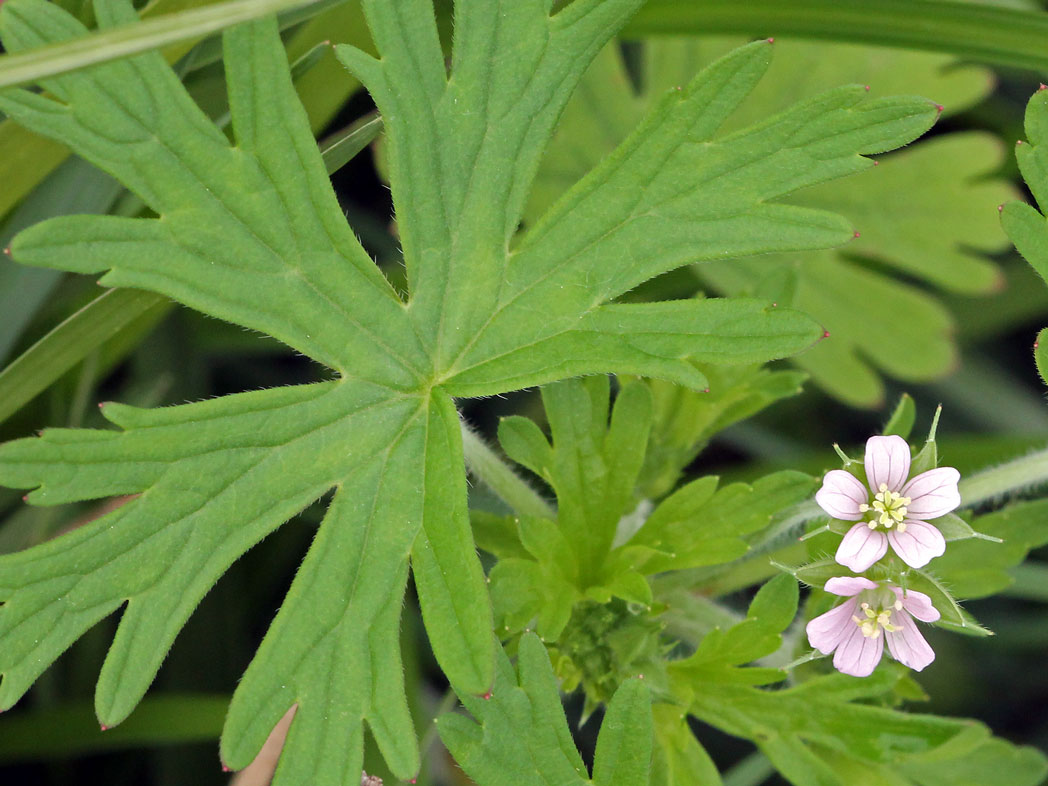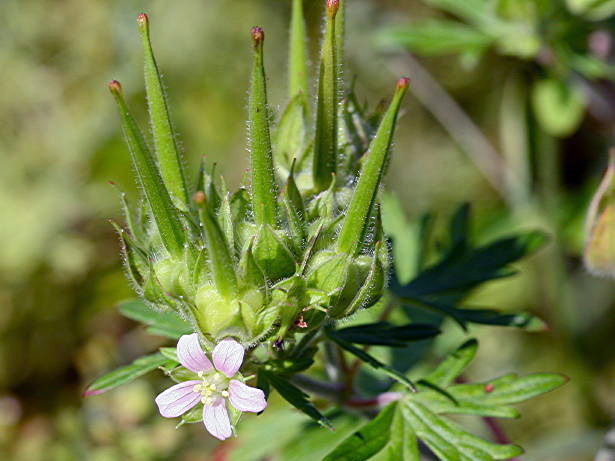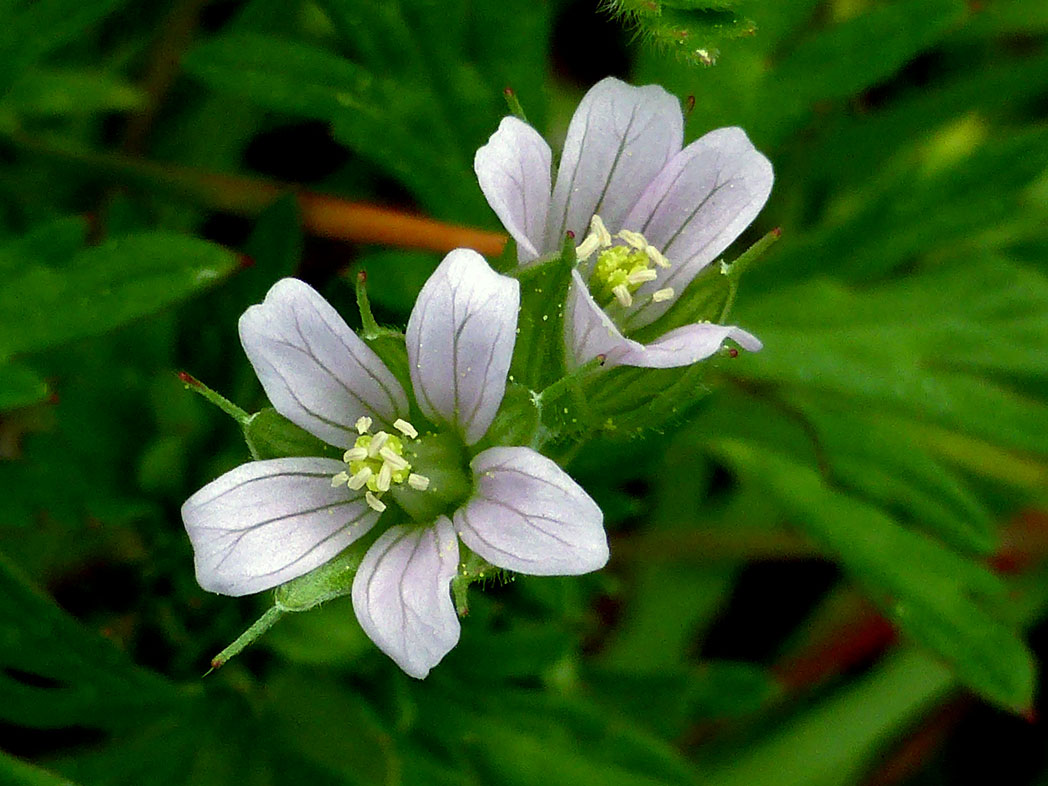Carolina cranesbill
Pictured above: Carolina cranesbill (Geranium carolinianum) by Eleanor Dietrich. Click on terms for botanical definitions. View post as a PDF
Carolina cranesbill is an annual native wildflower that occurs in lawns, urban gardens and disturbed areas throughout Florida. It is often considered a weed, but its winter- and spring-blooming flowers attract bees and other small pollinators. Birds eat the seeds and white-tailed deer may forage on the leaves. Humans can eat the leaves, too, but they can be very bitter and astringent. The root has been used historically to treat sore throats and diarrhea. Carolina cranesbill is Florida’s only native Geranium species.

Carolina cranesbill’s deeply palmate leaves. Photo by Mary Keim
Flowers are small (about ¼ inch in diameter), five-petaled and may be pink or whitish. Petals are notched and may have contrasting venation or nectar guides. Flowers are terminal and may be solitary or born in loose clusters. Sepals are ovate with long spine-like apices that are often red-tipped. Leaves are palmate with five sharply lobed segments. They are alternately arranged. Mature leaves may have reddish margins or tips. Leaf surface is finely pubescent with deep venation. Stems are covered in fine, erect hairs. Fruits are schizocarps (specialized capsules) with conspicuous needle- or beak-like structures.
The genus name Geranium is derived from geranos, the Greek word for “crane.” It and the common name “cranesbill” refer to the beak-like fruits.

The beak-like fruits give this plant its common name. Photo by Malcolm Manners (CC BY 2.0)
Family: Geraniaceae (Geranium family)
Native range: Nearly throughtou
To see where natural populations of Carolina cranesbill have been vouchered in Florida, visit florida.plantatlas.usf.edu.
Hardiness: Zone 8A–10B
Lifespan: Annual
Exposure: Full sun to partial shade
Growth habit: 1–2’ tall and sprawling
Propagation: Seed, cuttings
Garden tips: Because of its “weedy” reputation, Carolina cranesbill is generally not propagated by commercial growers. It is easily transplanted and requires little maintenance. However, care should be taken if introducing it into a landscape as it readily reseeds and spreads on its own. The plant can be mowed or removed by hand, but both methods should be employed before it sets seed.

